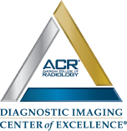What is Video Fluoroscopy?
Video fluoroscopy is a medical imaging technique that utilizes a continuous X-ray beam to create real-time moving images of the internal structures of the human body. It is commonly used to evaluate the functioning and movement of various bodily systems, particularly the swallowing process. In this article, we will delve into the world of video fluoroscopy, explaining its purpose, procedure, and significance in medical diagnostics.
- What is Video Fluoroscopy?
Video fluoroscopy, also known as a swallow study or modified barium swallow, is a dynamic imaging technique used to examine the swallowing mechanism. It involves the use of a fluoroscope, a specialized X-ray machine that captures continuous X-ray images and displays them on a monitor in real-time.
- The Purpose of Video Fluoroscopy:
The primary purpose of video fluoroscopy is to evaluate the swallowing function. It allows healthcare professionals, typically radiologists and speech-language pathologists, to observe and assess the movement of the mouth, throat, and esophagus during the swallowing process. It helps identify abnormalities, such as aspiration (food or liquid entering the airway), delayed swallowing, or structural issues that may contribute to difficulties in swallowing.
- How Video Fluoroscopy Works:
During a video fluoroscopy examination, the patient is asked to ingest various food and liquid consistencies mixed with a contrast agent, usually barium sulfate. Barium, which is a white, chalky substance, is easily visible on X-ray images. As the patient swallows, the fluoroscope captures a continuous stream of X-ray images, creating a video-like sequence of the swallowing process.
- The Procedure:
The video fluoroscopy procedure typically takes place in a radiology department or specialized clinic. The patient is positioned in front of the fluoroscope, which resembles a large X-ray machine. The healthcare professional operating the equipment will guide the patient throughout the examination.
The patient is given different food and liquid items containing barium to swallow. The fluoroscope emits a continuous low-dose X-ray beam, which passes through the patient's body. The X-rays are detected by an image intensifier, converted into a video signal, and displayed on a monitor in real-time. The healthcare professional carefully observes the images to evaluate the patient's swallowing function and identifies any abnormalities.
- Significance in Medical Diagnostics:
Video fluoroscopy plays a crucial role in diagnosing and managing swallowing disorders, also known as dysphagia. By visualizing the swallowing process in real-time, healthcare professionals can identify the cause and severity of the problem, determine appropriate treatment strategies, and monitor the progress of therapy over time. It helps guide decisions regarding dietary modifications, rehabilitative exercises, and potential interventions to ensure safe and efficient swallowing.
Video fluoroscopy is a valuable medical imaging technique that provides real-time visualization of the swallowing process. By using X-ray technology and a contrast agent, healthcare professionals can identify swallowing abnormalities, diagnose dysphagia, and tailor treatment plans to improve patient outcomes. As an important tool in the field of radiology and speech-language pathology, video fluoroscopy continues to advance our understanding of swallowing disorders and improve patient care.
Services
Contact Details
Address: 1971 Gowdey Road,
Naperville, IL 60563
Phone: 630-416-1300
Fax:
630-416-1511
Email: info@foxvalleyimaging.com
© Copyright 2023 Fox Valley Imaging, Inc..

